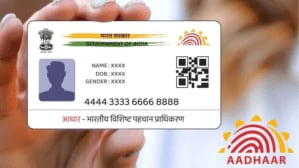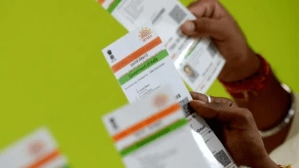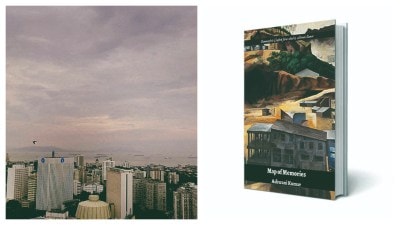There are those who train to be musicians. Then there are those who seem to be just born with it, to whom musical genius comes naturally. Rajasthani folk artiste Asin Khan Langa (35) seems to belong to the latter, who plays Sindhi sarangi as effortlessly and skillfully as he sings, with the audience enjoying the tunes of the popular and the not-so-popular Rajasthani folk songs equally.
It is no surprise as Khan belongs to the Langa community of western Rajasthan, who, along with the Manganiars, are hereditary musicians. “There is a popular saying among us that ‘a newly born child even cries melodiously’ in our community,” says Khan, who belongs to Barmer, situated in the Thar desert.
Khan started learning Sindhi sarangi, the traditional Langa instrument, at the age of eight years and singing just a decade ago. He is one of the two recipients of the Aga Khan Music Awards from India this year, the other recipient being the celebrated tabla player Zakir Hussain. He was conferred the award during the two-day celebration in Muscat, Oman that started on October 29.
The triennial awards recognise “exceptional creativity, promise, and enterprise in music in societies across the world in which Muslims have a significant presence.” The Langa-Manganiars are traditionally Muslims, but their music is diverse. “Apart from our traditional songs in Marwari, we also sing bhajans, Sufi songs, as well as songs of our pirs and fakirs (Muslim religious ascetics)” Khan says.
Also Read: The N word: A useful omnibus with informed views on nuclear arms and energy
Like everyone else in the Langa community, Khan started learning Sindhi sarangi at home. “Music is our legacy. It is what we have been doing for generations. So we don’t go elsewhere to learn music but learn it from father, grandfather, etc,” he says. Khan was eight when Komal Kothari, a folk artiste who worked extensively to document Rajasthani folklore, arts, and music, introduced him to the celebrated sarangi player Padma Shri Lakha Khan, who then took him in his fold. However, his tryst with singing happened only during the 2012 Rajasthan International Folk Festival (RIFF) at Jodhpur when he was called to fill in the absence of another artiste. “It gave me such a platform that doubled my skill set,” Khan says.
As a musician, Khan performs extensively in India and internationally alike. However, he concurs that money is a struggle, depending on how big an artiste is. “Artistes like Lakha Khan and Anwar Khan are not just good at their craft but are Padma Shri awardees, will get whatever fee they ask. But that might not the case for the lesser-known artistes,” he says. Speaking of remuneration, he says for performances in places such as Jodhpur, Mumbai, and Kolkata, they might get around Rs 15,000, but that would be different for performances abroad.
Before the regional, national, and international events, Langas and Manganiars only performed for their jajmans (traditional patrons). “The Langa patrons are Sindhi sipahis, who are Muslims, while Manganiars are Hindu Rajputs. We sing at their weddings, childbirth, deaths, and other important events. This is what we have been doing for generations. During weddings, they bestow us with money,” he says. Not just performance, the artistes also serve as oral historians for their jajmans. “Before the performance, we recite about 500 names of our patron’s forefathers going back to ages. They might not know the names of their forefathers, but we do,” he says.
Speaking on the relationship with patrons, Khan says, “If we have a performance for which we are paid thousands and are called by the jajmans to perform, we will go to the latter.”
The situation has changed a lot since Khan’s grandfather and great-grandfather performed. “Now, the jajmans give us around Rs 10,000, but it was just Rs 1 or so during the time of my grandfather and great-grandfather. I still wonder how they survived, supported their families, and continued with their art,” the artiste says.
Meanwhile, Khan has taken it upon himself to ensure that the Langa legacy continues by teaching the Sindhi sarangi to young kids, “so that we don’t go back to the old times”.
He puts enough emphasis on teaching as “Sindhi sarangi is our identity, which is disappearing in recent times”. However, he agrees that with greater Internet penetration, the younger generation is exposed to a range of music and sings everything from Nusrat Fateh Ali Khan’s qawwali to Ghulam Ali’s ghazals. “This is when I remind them that this is not our traditional music and no one will call us to perform these,” he adds.









